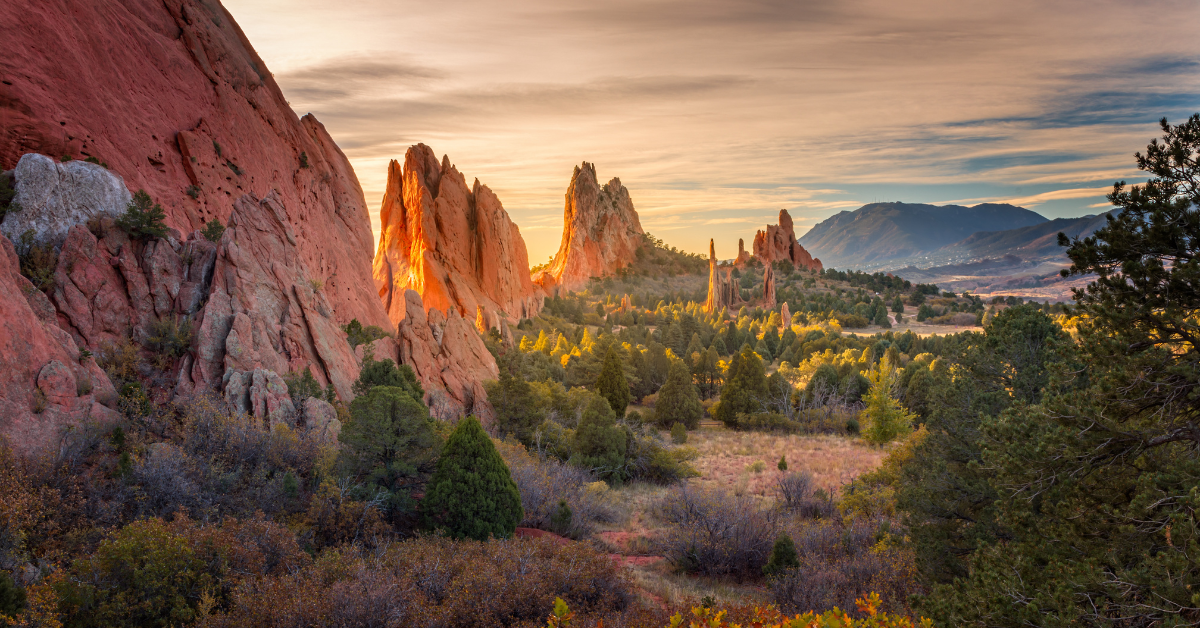Colorado Springs, located at the foot of the Rocky Mountains, is widely known for its natural beauty and role as a sports hub. However, there is no official kanji notation in Japanese, and the city’s name is almost always written in katakana. This article explains the origin of the name and explores how Japanese people perceive the city’s unique character.
Does a Kanji Notation for Colorado Springs Exist?
Since Colorado Springs is a foreign proper noun, the Japanese notation is basically katakana. Maps, travel guides, and newspapers consistently use katakana, and an official kanji form does not exist.
“Colorado” comes from Spanish, meaning “red,” while “Springs” means springs or fountains. Thus, it could be forcefully rendered as “Red Springs” in kanji. However, this is merely an arbitrary adaptation and not the correct name, so it is not generally used.
As a result, in Japanese, the name is consistently written as “コロラドスプリングス” (Colorado Springs) in katakana, and phonetic transcription is considered the most natural method.
The Origin and Meaning of the Name Colorado Springs
The name Colorado Springs directly reflects the features of the land.
| English | Meaning | Japanese Interpretation |
|---|---|---|
| Colorado | Red | Refers to red soil or red rock |
| Springs | Springs | A place where water wells up |
Thus, the combined meaning is “a land with red rocks and springs.” In fact, the region contains the Garden of the Gods, a natural park with striking red sandstone rock formations, reinforcing the background of the name.
The Image Japanese People Have of Colorado Springs
Natural Beauty
At the foot of the Rocky Mountains, the city offers clear air and vast landscapes that leave a strong impression on Japanese visitors. The mountains change appearance with the seasons, symbolizing “the nature of America” for many.
Tourist Attractions Compared
Colorado Springs boasts multiple famous tourist destinations, summarized in the following table:
| Attraction | Features | Japanese Impressions |
|---|---|---|
| Pikes Peak | A 4,302-meter-high peak | Known as “America’s Mountain,” popular for hiking and driving |
| Garden of the Gods | Park with towering red rocks | Widely introduced as a photogenic spot |
| Seven Falls | Seven-tier waterfall | A place where visitors feel both power and mystery of nature |
| Broadmoor Hotel area | Luxury resort | Appeals to travelers seeking a special stay |
For Japanese travelers, these attractions are a stage to experience the extraordinary.
Colorado Springs as a Sports City
The city is not only a tourist destination but also famous as an American sports hub.
| Sports Facility | Main Purpose | Features |
|---|---|---|
| Olympic Training Center | Training base for U.S. national athletes | Attracts world-class athletes |
| World Figure Skating Museum | Historical exhibits on figure skating | A cultural hub for skating |
| Baseball and Football Stadiums | Used by local universities and clubs | Exciting games held regularly |
| Ice Hockey Rinks | Ideal for high-altitude training | Used as a camp location for international matches |
In Japan, the city is primarily known for its sightseeing appeal. However, for locals, it is “a city that lives with sports,” with athletics deeply rooted in everyday life.
Local Life and Culture
Colorado Springs is defined by a lifestyle that embraces nature. Residents frequently go hiking and camping, and outdoor activities are deeply ingrained in daily life.
The city is also known for its military significance, with the North American Aerospace Defense Command (NORAD) serving as one of its most symbolic institutions. Beyond tourism and sports, the city also functions as a national defense hub.
The features of local life can be summarized as follows:
| Category | Details |
|---|---|
| Lifestyle | Outdoor-oriented, coexistence with nature |
| Cultural Activities | Museums and theaters foster active arts |
| Education | Numerous universities and research institutes highlight its academic side |
| Military Facilities | Functions as a defense hub centered around NORAD |
These factors together form a multifaceted charm that goes beyond a mere tourist city.
Conclusion
Colorado Springs is a city that has no official kanji notation in Japanese, with katakana being the standard form. Its name means “the land of red springs,” harmonizing with the natural environment.
Japanese people primarily associate it with “majestic nature,” “tourist appeal,” and “American atmosphere,” while also recognizing it as a sports city centered around the Olympic Training Center. Moreover, its lifestyle rooted in outdoor culture and its role as a defense hub give it multiple identities.
For visitors, the city provides a wealth of fresh experiences and leaves a lasting impression. Colorado Springs is a city where nature, tourism, sports, and culture converge.






